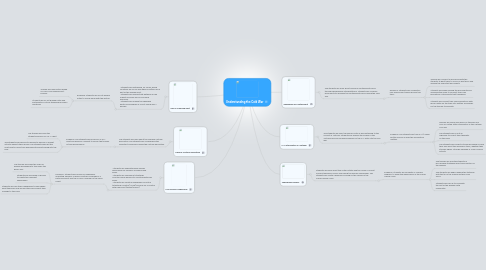
1. NATO & Warsaw Pact
1.1. -Students will distinguish, on a map, which countries are NATO and which countries are a part of the Warsaw Pact. -Students will differentiate between a free market economy and a command economy. -Students will analyze the changing political boundaries of a Post-World War II Europe.
1.1.1. Evidence: Students will fill out guided notes to follow along with the lecture.
1.1.1.1. Teacher will lead lecture based on NATO and Warsaw Pact policies.
1.1.1.2. Students will fill out guided notes and participate in critical thinking discussion questions
2. Chinese Cultural Revolution
2.1. The students will learn about the Chinese Cultural Revolution. The students will comprehend the important vocabulary during the Cultural Revolution.
2.1.1. Evidence: The students will produce a K-W-L chart and perform a Quizlet to inform the teacher of their performance.
2.1.1.1. The teacher will have the students perform a K-W-L Chart
2.1.1.2. The students are placed into groups to perform a Quizlet activity against other groups. The students who get the most points correct are awarded extra points going into the final.
3. Free Speech Newspaper
3.1. -Students will understand key polices which allow for freedom of speech and press. -Students will compare a totalitarian country’s press policies to countries with free press. -Students will create a newspaper for both a totalitarian country (USSR) and one for a country with free press (Britain/France).
3.1.1. Evidence: Students will produce a newspaper indicating freedom of press countries coverage of a particular event and the USSR's coverage of the same event.
3.1.1.1. The teacher will show the video of Reagan demanding to tear down the Berlin Wall.
3.1.1.2. Students will be placed in groups to create two different newspapers
3.1.1.3. Students will use other newspapers to help shape what theirs will look like and then will present their findings to the class.
4. Geography of Containment
4.1. The students will learn about American containment policy through geographical interpretations. Students will compare documents to decipher the containment policy during the Cold War
4.1.1. Evidence: Students will complete a mini DBQ project based around this topic
4.1.1.1. Teacher will conduct a read aloud with the students to ge3t them to focus on key terms and analyze the important documents
4.1.1.2. Students will begin reading the documents and analyzing the maps to conduct their own perception of the events that transpired.
4.1.1.3. Students will convert their communications with group mates on the topic into written summaries for the teacher to evaluate.
5. U.S. Intervention in Vietnam
5.1. The students will learn the human costs of war pertaining to the conflict in Vietnam. Students will analyze the causes of the Vietnam War and compare reasons for the U.S. entry into the civil war.
5.1.1. Evidence: The students will turn in a 1/2 page written journal on why this information matters.
5.1.1.1. Teacher will lead a discussion on the pros and cons of United State intervention in the Vietnam Civil War
5.1.1.2. The students will fill out an organizer to collect their thoughts on the issue
5.1.1.3. The students will be split into groups based on how they feel about the discussion topic, whether they strongly agree- strongly disagree in a four corners activity.
6. Superpower Rivalry
6.1. Students will learn about the United States and the Union of Soviet Socialist Republics’ rivalry over being the world’s superpower. The students will create a diagram focusing on the causes of the Cuban Missile Crisis.
6.1.1. Evidence: Students will complete a "Iceberg Diagram" to show the significance of the Cuban Missile Crisis.
6.1.1.1. The teacher will lead the students in pre-reading strategies about each section of the reading.
6.1.1.2. The students will begin reading the textbook with the tip of the iceberg as their main focus
6.1.1.3. Students will pair up to complete the rest of the diagram with classmates
